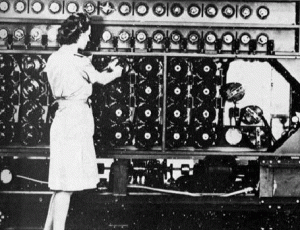“Jackson Mac Low as Reading Machine: Stanzas for Iris Lezak, Sampling, and Print Culture,” presented at High and Low, European Network for Avant-Garde and Modernist Studies, Adam Mickiewicz University, Poznan, Poland, 11 September 2010.
[From the introduction] In this paper, I propose a historical and cultural reading of postmodern practices of textual sampling and “reading through” in the poetry of Jackson Mac Low. To do so, I will position the methods and materials of his magnum opus Stanzas for Iris Lezak at the intersection of several concerns. The first is the imperative to rethink modernism and the historical avant-garde in relation to the content, forms, and media of mass culture. While this has often meant, after Walter Benjamin, “the movies” as site for progressive politics, Gertrude Stein’s valorization of Henry Ford’s assembly line production stands as a more general invocation of mass production and markets, as it follows literary high/low interfaces such as James Joyce’s use of the Dublin Evening Telegraph and anticipates John Dos Passos’s and Kenneth Fearing’s incorporation of print culture in their work. The second concern develops the potential relevance of Bob Brown’s The Readies for Mac Low’s later avant-garde moment: namely, its (imagined) merger of writing machines (after the telegraph, typewriter, and ticker tape) with media of mass culture such as the newspaper. This fortuitous juxtaposition of typewriter and newsprint leads to a third area of interest (not developed here): the importance of mass forms of print and media culture for the conceptual art movement of the 1960s among figures such as John Cage, On Kawara, and Vito Acconci. Finally, I am in the process of surveying and comparing, in several recent papers, a range of aesthetic and cultural practices of “sampling,” from Language poetry to the digital sampling in music to election forecasting to image sampling.
My account of Mac Low’s chance-generated “readings through” of a variety of forms of print culture in Stanzas for Iris Lezak (written 1960–61; published 1972) unites many of these concerns in its form of postmodern poetic practice: 1) Mac Low deliberately dismantles boundaries between high and low print culture in Stanzas, using as source materials works of literature, philosophy, psychoanalysis, and religion alongside tabloid journalism, middlebrow essays, radical pamphlets, and newspaper articles; 2) Mac Low’s aesthetic decisions are undertaken through the use of “machinic” procedures that make poetry by means of an imagined, nonintentional “reading machine” for the materials of print culture; 3) Mac Low’s intersection of chance procedures and print media anticipates an important concern of the conceptual art movement, especially for artists who work with texts, in the 1960s (which I bracket here); finally 4) Mac Low’s Stanzas provide a canonical example of the use of sampling procedures to generate poetic texts, predating the context-free formalism of Cage’s mesostics while responding to cultural and political concerns that will come to fore in the later poetic experiments of the Language school, conceptual writing, and Flarf. There has not been an adequate account of the politics of Mac Low’s textual sampling procedures; my claim is that, rather producing an aleatorical formalism, Mac Low is pursues a cultural politics through the forms and possibilities of avant-garde writing. While I will not be able to read Stanzas equally in all the above registers, I hope to sketch out a rough framework for an adequate reading to come. [. . .]
[For a draft of the paper as presented, write b.watten@wayne.edu.]













